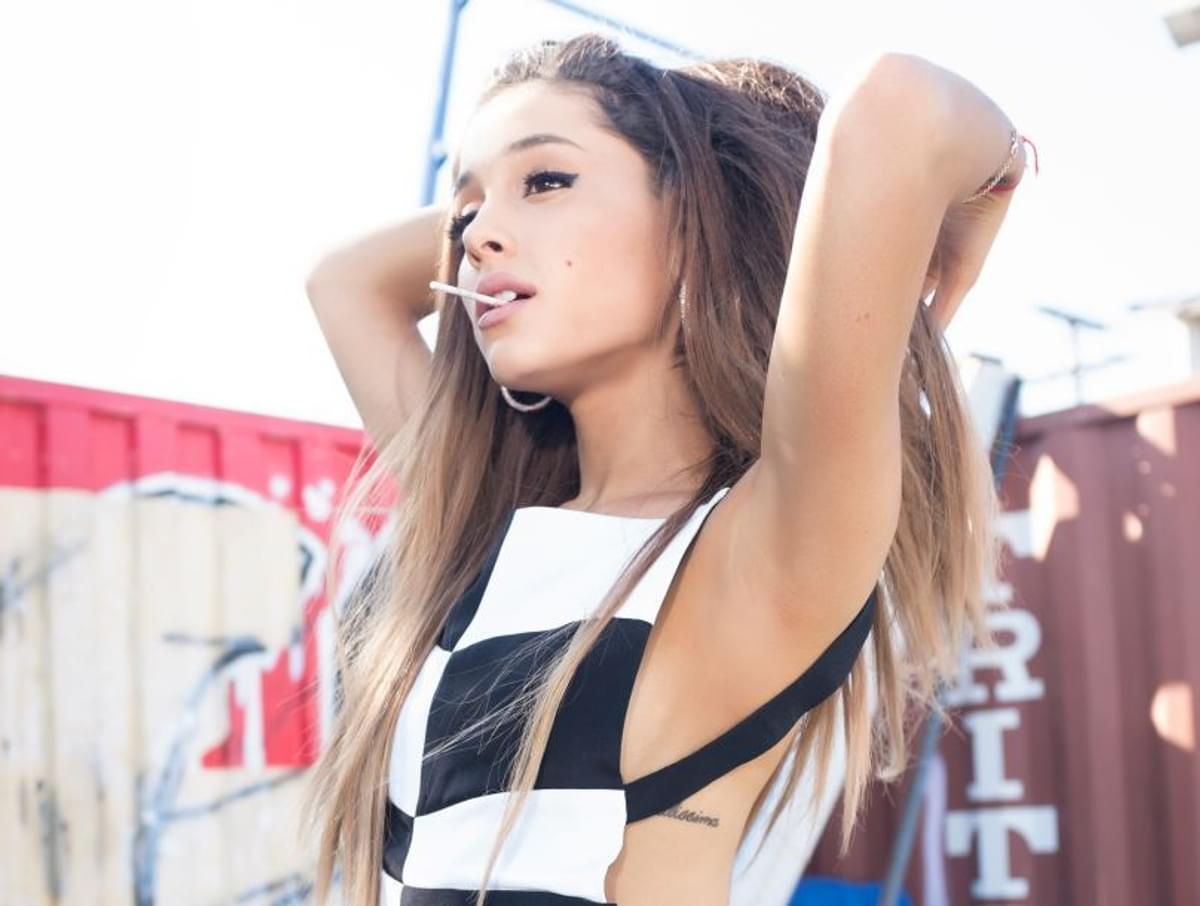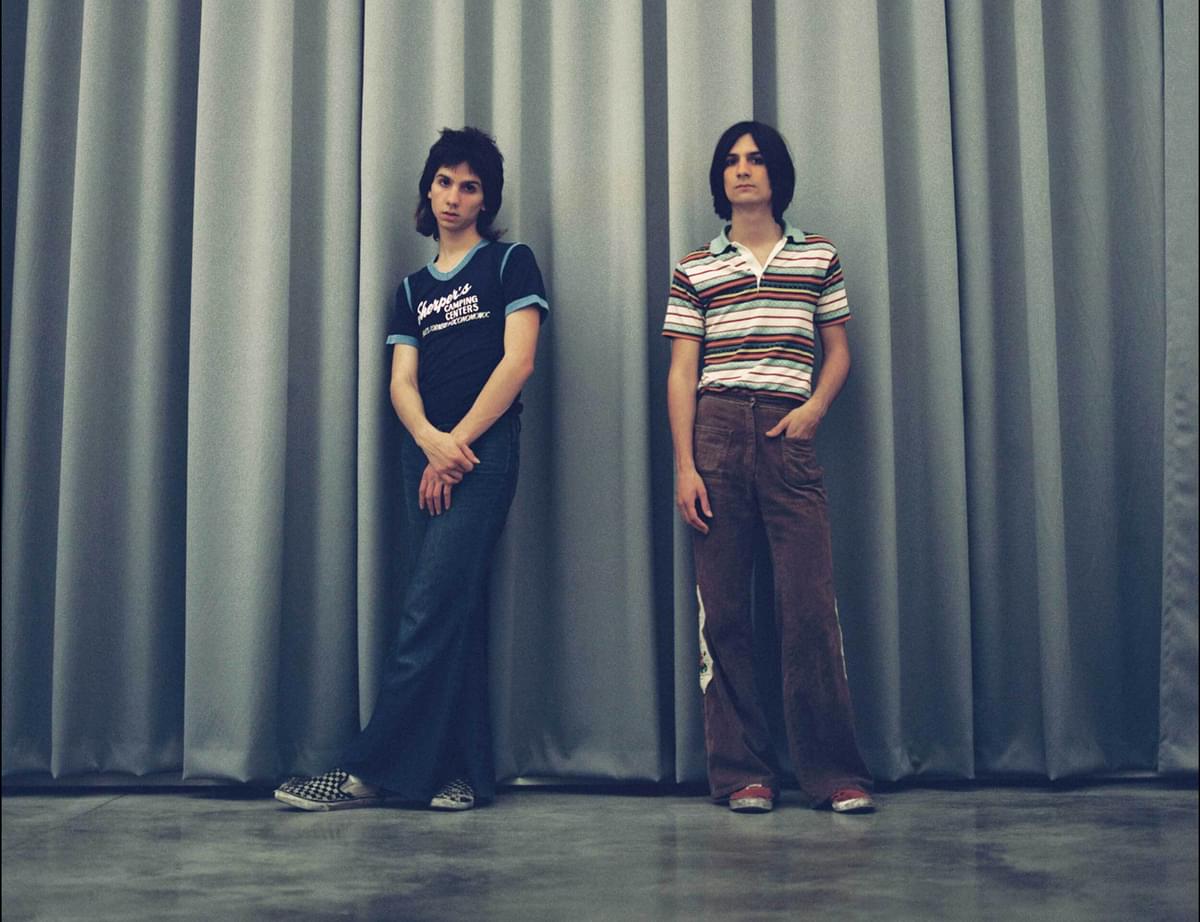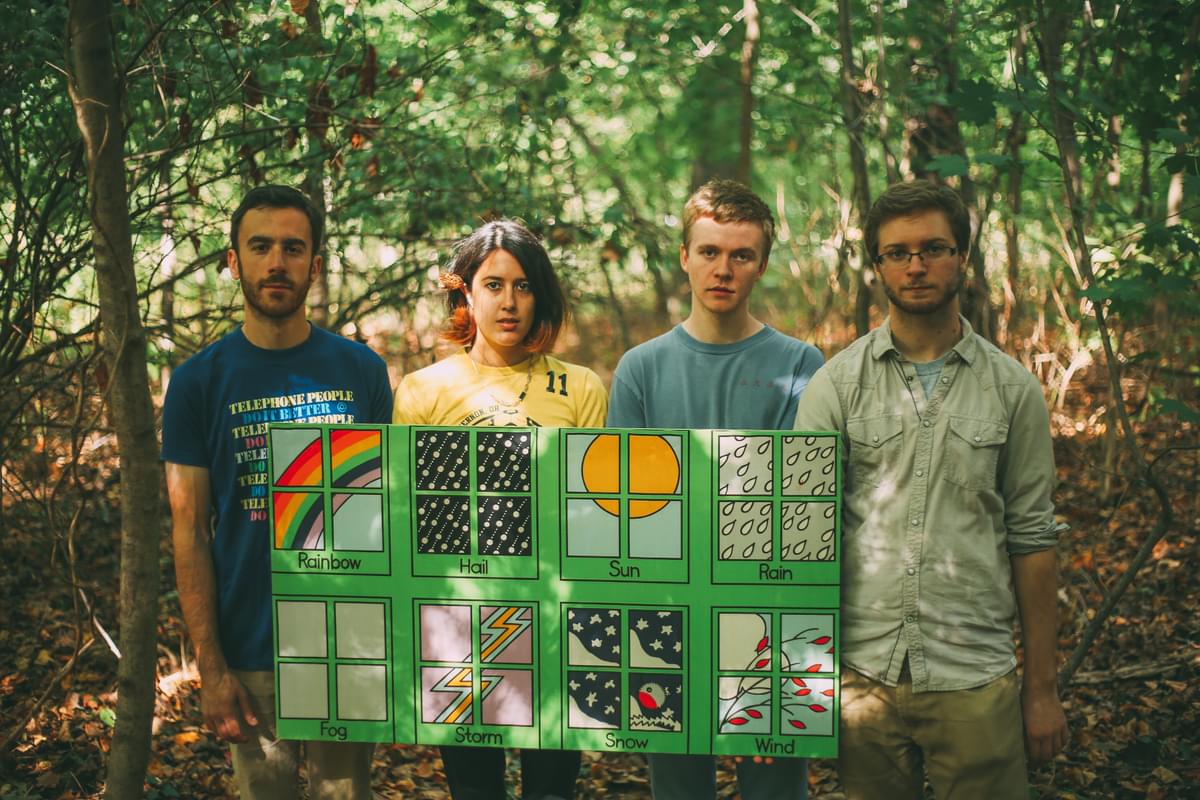
The Best Fit Fifty Essential Songs of 2016
To illustrate a year in music for us is to reveal our dumb, dopy heart on our sleeve. We cried to these songs, we laughed to them and we got drunk to them. We shouted about some of them in a way that seems overblown and entirely unreasonable but that's how music really works for us and, we think, for many others too.
The songs on this list - as with every end-of-year musical reflection - represent a twelve month capsule of discovery and celebration. There are songs you'll know and already be sick of and there are ones we know you'll be hearing for the first time, we hope. We've tried to present something of a companion piece to our favourite albums so there's only a touch of duplication.
Here are the fifty songs that defined our year. You can also listen to the whole thing by following over on Spotify.
"Into You" by Ariana Grande
The road from Disney starlet to brazen sex kitten is one paved with shaved heads, matching double denim and, in the case of Ariana Grande, treasonous words and licked donuts. For just a tricky moment or two in the summer of 2015 it looked like the career of the Floridian singer could go either way, but then definitively tipped into overdrive.
Dangerous Woman transformed Grande into an assured, confident performer and there was no better evidence of this than on “Into You”. Helmed by super-producer Max Martin, who sprinkles his usual pop gold dust over proceedings, the track is as hot as all heck. From the off, “Into You” throbs with a want and a yearning. “I’m so into you, I can barely breathe” sighs Grande, her tensions rising. The heat increases alongside the pulsing bass and R&B clicks, and the mercury bursts from the thermometer at the point in the chorus where she sings “a little more conversation and a little more touch my body….I’m so into you, into you into you”. It signals the tipping point from potential into dangerous liaison, the bristling tension spilling over into the music. There’s a moment from the bridge to the outro where “Into You” gets almost breathless and out of control, mirroring that heady moment where wrong never felt quite as right as this.

"Love To Hate It" by Off Bloom
Danish trio Off Bloom made a relatively low key entrance in September this year with their first track "Thorns", a corkscrewing electronic pop set-piece, which arguably should have garnered more attention than it did.
Part of the same flowering Copenhagen crew as Liss, Vasco and Vera, Off Bloom's follow up, “Love To Hate It” pressed all the right buttons and then some. The lead single and title track off their debut EP (on their own Sport Records), "Love To Hate It" is a perfect polaroid shot of you being hit with that feeling of sinking, unreciprocated infatuation - blitzed together with yearning vocal hooks, prickling drum machines and glitter cannon synthesizer blasts. With Two Inch Punch and AlunaGeorge's George Reid contributing production on the EP, and a deal with Polydor already in place for future releases, we'll be hearing Off Bloom channel more feelings of lust and rejection through their fizzing electronic pop lens next year.

"Man" by Skepta
Not since Dizzee Rascal’s Mercury Prize winning Boy in da Corner has grime had the spotlight so brightly shone upon it. Thanks to Skepta, 2016, like 2013, has also been dominated by that frenetic and distinctly London sound. It’s not just Skepta's doing of course - London’s hip hop, electronic and grime scene has been going strong for years, arguably coming back to the fore in 2015 with help from Elf Kid, The Square and Family Tree. Years of amazing underground experimentation paved the way for Skepta but if 2016 belongs to anyone it has to belong to the man who shutdown Jools Holland and won the Mercury prize for his incredible album Konnichiwa. The stand-out from that record is “Man” – a track that eschews the usual trappings of fame in favour of family values and his roots, his gang. It's a direct response to grime moving up front and centre in British music and a massive kiss off to those who weren't there all along, carried by Skepta’s bravado, confidence and flawless MC skills.

"Spreadaround" by P2X
In a year where Jófríður Ákadóttir released music with Samaris, Pascal Pinon, JFDR and GANGLY the hardest working person in Iceland still found room for another project – P2X.
P2X call themselves as a "pan-Scandinavian-European-UK art collective consisting of 10 non-facial members named 2, 3, 4, 5, 6, 7, 8, 9, 10 and 11. No one is number one.” This allows the collective, made up of some apparently well-known producers and musicians, a freedom of sorts and a completely blank page to be whatever they want to be. And boy do they go for it. If you know the work of Ákadóttir, then expecting brilliance is standard, but even by that measure “Spreadaround” is a stunning introduction to P2X.
Out of crackling, slightly menacing ambience which recalls Boards of Canada, a pitch-bent female vocal softly moans the title of the song. Skittering trap beats unbalance “Spreadaround”, playing gentle havoc with the circular nature of the looping voice. Unsettling, compelling, perhaps even a work in progress, P2X baffled and beguiled in equal measure with “Spreadaround”. An incredible introduction and yet another fascinating new chapter in Ákadóttir’s career.

"Fool's Gold" by Dagny feat BØRNS
If we're going to talk about falling for songs in an instant, we have to talk about Dagny. Time is precious and each track on this year’s Ultraviolet EP knows that, not least the BØRNS-featuring “Fool’s Gold.”
Grabbing you with plunging piano keys, a snappy drum beat and those unmistakle “oohs” Dagny lets you know what you’re in for in the first five seconds. Those opening moments expertly predict the rush of warmth, the irresistible pop vocals, those gently cantering rhythms, that distinctive soaring nostalgic euphoria that has us imagining we’re spinning on the dancefloor until we’re dizzy. Throw off the weight of 2016 and join us!

"As Long As We're Together" by The Lemon Twigs
The D’Addario brothers Michael and Brian are still in their teens, but have been making music together since they were infants. “As Long As We’re Together” erupted in the summer like a bolt out of the blue, but it was a moment they’d spent their whole lives preparing for.
For a large part of their formative years the duo were child actors, yet the musical stage was their natural calling. Starting off with a strummed acoustic guitar and Michael’s tremulous singing, it initially lulls you into the sense that it’s going to be a folk song, before the chorus erupts into a technicolour statement of intent that adds Brian’s lovely counterpart singing and moves musical direction at a giddying pace. The chorus recalls Big Star and Bowie but miraculously they manage to create something entirely of their own making.
The song reveals itself to be about finding hope, love, solidarity and happiness - even if it’s fleeting,- and for its five plus minutes transports the listener to a place of bliss. It’s an anthem comparable to “The Kids Are Alright”, “For What It's Worth” and “Hand In Glove”. “I’m just glad that we can do something that’s fully the two of us, it doesn’t feel like there’s a missing element to it,” Brian told us earlier this year. There’s nothing missing with “As Long As We’re Together”: it’s the guitar anthem of 2016.
- Ed Nash

"I Know A Place" by Muna
LA three-piece MUNA make shimmery synth-pop and “I Know A Place” follows the success of their four-track debut, The Loudspeaker EP, a meticulously crafted introduction to their work. The tracks sees Katie Gavin, Josette Maskin, and Naomi McPherson dial up their open-hearted, open-handed brand of pop to the absolute maximum. The result is so euphoric it almost manages to be an antidote to the rest of 2016’s fuckery.
It's an unashamedly queer homage to the welcoming and inclusive spaces provided by LGBT-positive dance clubs. Originally written in celebration of the US finally achieving nationwide marriage equality last year, the track – a firm favourite of the band’s live set – took on a bittersweet sheen in the wake of this summer’s shooting at Pulse Nightclub, Orlando. With deft drum programming, subtle harmonies, and an anthemic chorus, it’s a song for laughing, crying, and above all, dancing to.
Pop music – particularly that made by women – has a long history of dismissal as frivolous, superfluous, redundant. MUNA challenge this at every turn. Each release of theirs is insistently, urgently empowering; indicative of a determination to make the world a place in which we all actually want to live. “I know a place we can go / Where everybody gon’ lay down their weapons,” promises lead singer Katie Gavin, and for a second, I believe her.

"Holy Grounds" by GANGLY
It took GANGLY three months shy of two years to deliver a follow up track to their debut single “Fuck With Someone Else”. Something akin to an Icelandic supergroup - if such a thing could exist in a town where a new band is formed almost every week - they were initially a mystery but quickly unmasked as Jófríður Ákadóttir (Samaris/Pascal Pinon/JFDR), Sindri Már Sigfússon (Sin Fang/Seabear), and Úlfur Alexander Einarsson (Oyama).
“Fuck With Someone Else” was a bold statement - a song that only came together because Einarsson approached Sigfússon to produce a track that didn’t quite fit his other band. Sigfússon’s gilfriend suggested the song needs “some feminine energy” and so Ákadóttir, a longtime friend of Sigfússon, was recruited. They’d previous toured together, even recording a song they’d written on the road for Best Fit.
In the time prior to the follow up, Ákadóttir has been particularly productive, with a new solo project underway (JFDR), new albums from Samaris and Pascal Pinon, and a brief collaboration with Sykur's Kristján Eldjárn. Sigfússon dropped a new Sin Fang record and collaborated with Sigur Ros frontman Jónsi. It’s amazing then that “Holy Grounds” sounds so energised, fresh, affecting and beautifully fucked up. The song has been described quite perfectly elsewhere as like “Lorde fronting a laidback Salem” but there’s even more going on than that. Holy Ground has a skewed and trappy underneath that stutters away while Ákadóttir’s vocal - perhaps the most perfect she’s ever sounded - intones a place somewhere between enchantment and weariness. As her words get chopped into pieces and strings carry her to the songs’s final moments, a murky sadness is all that remains. It’s emotionally affecting on a granular level, a triumph of three minutes.

"Formation" by Beyoncé
The fact that Beyoncé and “Formation” were, respectively, the most Googled artist and song of 2016 still doesn’t quite convey just what a monumental year it’s been for that song. “Formation” isn’t just an important song of 2016, it’s one of the most important songs of the decade and arguably the best thing Beyoncé has ever produced.
The song came by way of a video - perhaps one of the few occasions in music when a visual will forever define the track it belonged to; no mean feat in 2016. References to Hurricane Katrina and Black Lives Matter gave the clip its immediate currency but, as Omise’eke Natasha Tinsley wrote in Time, it “differs radically from other post-Ferguson protests songs like Trip Lee’s “Coulda Been Me” or Rihanna’s “American Oxygen” video, which focus on black men’s deaths… Beyonce’s celebration of her formation—her heritage, her fine form, her politics—is a tapestry of black women’s colorful, textured lives, which refuse to become the living deaths that feminist foremother Audre Lorde warned us about."
"Formation" set the tone for 2016 and showed the world what socially conscious, intelligent and beatiful music sounded and looked like. That's quite an achievement when you're already the greatest pop star of the modern age.

"Old Friends" by Pinegrove
Pinegrove’s "Old Friends" instills an urgent call to empathy; it focuses on how introspection can often lead to a hopeful, outward-facing future. It’s frustrated at the cementation of home but thoughtful of its presence and of its importance in shaping who we are. Offering a poignant but sincere commentary, the Montclair, New Jersey band are masters at articulating what it is that makes us human.
“It's the first song on the album and it introduces you pretty immediately to the character who is going to be your guide for the whole album,” Pinegrove frontman Evan Stephens Hall explains. He speaks in a thoughtful and unhurried kind of diction, pausing to conduct his thoughts in a notably veracious manner. It’s symbiotic with his lyricism; he’s careful to make every word count that results in a narrative that is uniquely candid and euphonic.
"It's an exploration of geography but also the emotional geography of a person; what's going on in their own mind, lexically or emotionally or intellectually.” - Evan Stephens Hall
Whilst the explorative nature of albums sees a emotional expedition take place through the course of its output, Pinegrove also focus on the literal form of a journey. As the introduction to the band's debut album Cardinal, "Old Friends" begins its story with the lyric “walking around...” – something that Hall himself found to motivate some kind of creative spark. “There's a park right by my house called Brookdale Park and while I was writing the album, I would walk there nightly,” he says. “That lyric introduces the theme of travel and escape but also home and walking around in your home town. It's an exploration of geography but also the emotional geography of a person; what's going on in their own mind, lexically or emotionally or intellectually.”
“I remember thinking up the first lines and that song is sort of at the pace that I was walking so I was writing it with my foot steps and it was just a very integrated attempt. It really was just me singing this song accapella to myself – coming up with the lyrics and walking in the park.” Hall explains that through this process, he loses his sense of “the present” and instead, focuses on the past and the future. This evokes the reflective nature of "Old Friends" – it’s imperatively moving at a time when most of us are struggling to grasp what it means to love and to be loved. It’s emotional directness narrates the shifting world of young adulthood and offers a comforting liberation from the constraints of our own conflicts; of overthinking everything, of the remorse that comes with it.
If you’ve ever been to a Pinegrove show, you’ll notice that one line in particular provides a distinctly life-affirming response. The first time I heard “I should call my parents when I think of them / I should tell my friends when I love them” live, one of my best friends turned to face me, grabbed me by the shoulders and sang it right back to me, looking me directly in the eyes. This kind of platonic love is rarely voiced and enabled me to feel alive for a brief moment, of cherishing this slowed-down moment in which someone was telling me I mattered. It’s a line that makes time stand still.
"The initial take on 'Old Friends' was about how there was someone whom I admired but I didn't know so well, and when they died suddenly I knew that they’d never know I felt that way about them." - Evan Stephens Hall
“The intended meaning has changed somewhat since I wrote it,” Hall reveals of the lyric. “The initial take was about how there was someone whom I admired but I didn't know so well, and when they died suddenly I knew that they’d never know I felt that way about them. It’s a really jarring, juxtaposition that you are forced to reconcile; when someone young and vital and beautiful and kind and nice dies for no reason. The sudden nature was a factor in all of this re-evaluation and that's part of the reason it was sort of spinning in my head so urgently.” However, he comments on the evolution of its meaning, saying he loves seeing friends in the crowd hug during the line.
“I think that's helped me to express love more regularly for the people who already know it,” he adds. “You can never say it enough if you really mean it.”
The transcendent dialogue of "Old Friends" is an all-consuming force that carefully assembles the juxtaposition of melancholy and optimism. It offers a glimpse of light in its comedown, hinting that something brighter lies in the wake of onerous solitude. “I knew happiness when I saw it,” concludes the song, noting that through contemplative learning, and countless impediment, you can encourage a discernable kind of positivity. By closing it with this kind of open-endedness, "Old Friends" urges you to be the best person you can be; through all the hate and negativity 2016 has conjured up, Pinegrove manage to provide an essential and moving alternative.

Get the Best Fit take on the week in music direct to your inbox every Friday

Lorde
Virgin

OSKA
Refined Believer

Tropical F*ck Storm
Fairyland Codex





